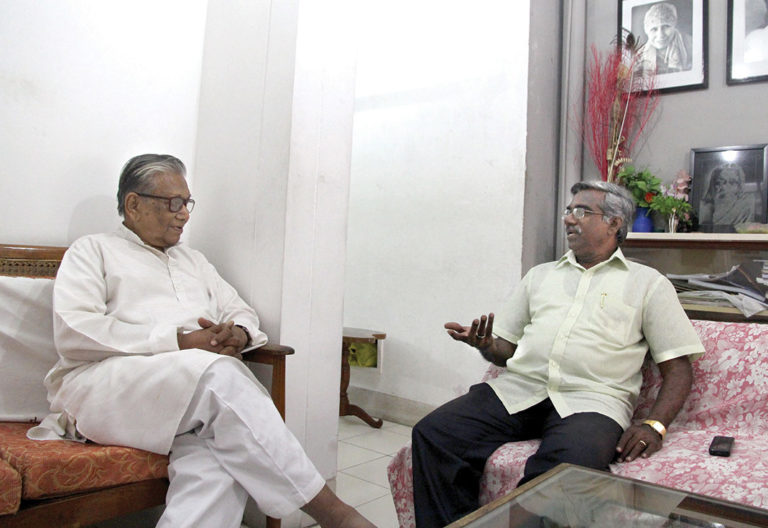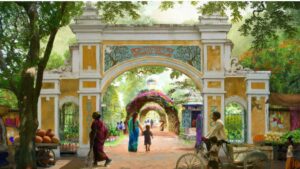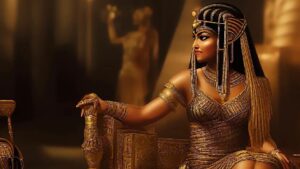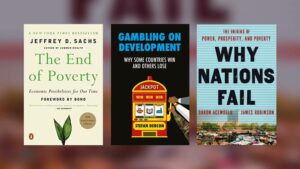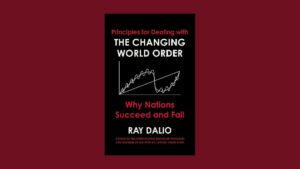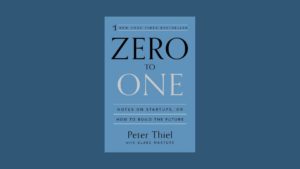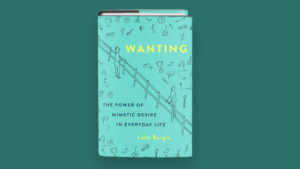Often referred to as India’s foremost bilingual writer, Manoj Das is a legend. Three generations of readers have rejoiced, sympathised, wept, and laughed with the situations and characters created by him in his short stories and novels. Vice-Chancellor of Ravenshaw University stated while conferring on him D.Litt. (Honoris Causa), “whose writings have enchanted a long-range of readers, from the village boys to Graham Greene”. What is equally or probably more significant, three generations of writers too have been deeply influenced by his unique and powerful style.
There are writers in the younger generation who have even openly stated, with a pinch of pride, that they have tried to follow the suave yet witty handling of diction by Manoj Das. The Department of English, University of Illinois, chose to include only one short story from outside the US in the very first issue of its magazine, Ascent, and their choice was one from Manoj Das. If the Long Island University, in their compilation called Brooklyn and the World chose only one story from Asia to be placed juxtaposed with a bunch of the selected writings of the State, it was a short story by Manoj Das. He is probably one of those living writers on whom maximum numbers of research theses are produced. UGC has sponsored several national seminars on topics such as Magic Realism in the Fiction of Manoj Das as well as on his individual titles.
Manoj Das (Born on 27 February 1934) has been living in Sri Aurobindo Ashram at Pondicherry (lately Puducherry) for the past 53 years, practically aloof from the cosmopolitan literary atmosphere. Nevertheless, accolades have pursued him there – Sahitya Akademi Award, the prestigious Saraswati Samman, Padma Award, Fellowship of the Akademi, Honorary D.Litt. from five universities, the position of Honorary Professor Emeritus from one university, to name some of them.
Recently, I did meet legendary bilingual writer Manoj Das and had a relaxed conversation.
- What is truly modern?
- What is the Western impression of Indian writing in English today?
- Is there space enough for inspired writing in today’s world where literature too is motivated by crash extraneous forces?
Prof. Das, I am meeting you on behalf of a distinguished publication, Indian Economy & Market from Mumbai. This is circulated among the elite and this finds a ready readership among teachers and students of higher learning.
Manoj Das (after flipping through the copies): “This seems to be an extraordinary journal, a publication devoting space to literature though it specialises on economic issues as its title suggests. Its authorities seem to have a healthy holistic attitude.”
Sometime back you inaugurated a national seminar on Cosmopolitan Spaces and Modern Indian Literature at Bangalore. You made some extremely thought-provoking points on modernity…
On the concept of the modern. Right. I spoke for quite some time. I will brief you. Well, don’t we often confuse anything contemporary, anything exotic or simply bizarre, with modern? I think modernity has something to do with the progress of our consciousness, the revelation of new values that lead man towards the discovery of answers to questions that have haunted man consciously or unconsciously, since the dawn of his awareness of things? Very summarily they have been diagnosed by Sri Aurobindo in his magnum opus, The Life Divine, as God, Light, Freedom, Bliss, and Immortality.
Don’t we automatically progress towards them with the passage of time?
We should and we do, but, barring a few, we do so not necessarily with a conscious aspiration. Hence, so far as collective humanity is concerned, we have progressed materially. All our mind-boggling explorations and inventions in science and technology, all these gadgets that have become indispensable to our life – once I saw a cartoon in a foreign journal simply showing a gentleman standing on the road; the impression he gave was he was sort of shivering. The caption informed us that he was feeling naked because he had forgotten his mobile at home! – yes how much a limb of our personality that invention has become! Well, that is our modern lifestyle. But the million-dollar question is how far have we become modern in our consciousness? Have we realised greater peace, greater joy, than our ancestors did? Do we at least sleep more soundly than they did or laugh more heartily? How different are we in the quality of our feeling, emotion, ambition, etc. from our ancestors?
Aren’t we?
I wonder how much we are – when I see the reports of dowry death, dowry-based litigations even in affluent families, to speak of a single issue out of so many. We read in the Mahabharata that Savitri, the princess of Madra – by the way – Madra was the name of modern Afghanistan – chose Satyvan for her would-be husband, her parents, advised by Sage Narada, tried their utmost to dissuade her from taking that step. Not because the prince was living in a hut in the midst of a forest along with his exiled parents – the father, deprived of his kingdom, was blind – not because they had become paupers, but because Satyavan was destined to die after just one year. But Savitri would not change her mind. She married Satyavan but certainly did not carry to their hermitage-like dwelling elephants loaded with dowry! She walked into her husband’s hut bare-handed. Was that society less modern than ours?
But the feminist movement had made women today surely braver!
Braver than those of yore? No doubt, the Indian society, by and large, had been thoroughly degraded for a few centuries past. The process began before the colonial rule, continued during it, and even after it. But do you know who is the world’s first feminist?
It was Sati, the youngest daughter of the primeval monarch Daksha. While all the other daughters of the monarch were married to gods and Rishis of the earliest generation, Sati insisted on marrying Siva to which her father did not agree. Siva lived an ascetic life, even without a roof on his head, attended upon by a horde of supernatural beings. How could a royal father let her most beloved daughter marry such a have-not? But Sati defied her father and married him. After a while, she heard of a great ceremony about to be performed by her father. Even though she was aware of the fact that while all her other sisters and their consorts had been invited to it but she had been deliberately left out, she got ready to attend the ceremony. Siva warned her not to, for it was not proper to visit a house uninvited. But her spirited rejoinder was that at no time a daughter’s entry into her parents’ house could be censored. By the way, Professor, do you know? That statement of Sati became an unwritten but irrevocable law in Indian tradition. Any moment a daughter could return to her parents’ house.
That is why in the vocabulary of ancient Indian jurisprudence you find the word Tyajyaputra, or a son disowned, but no word as Tyajyakanya or a daughter disowned. To return to our story, Sati did go. You see, first, she defied her father and married the one she adored; next, she exercised her free will against her husband’s will too. So?
Indeed, what a fall our social consciousness had had later!
Right. And if we write today criticising these collective social lapses – and we must write, we are progressive and modern. There is nothing wrong in our sporting such badges. But, aren’t we only lamenting or rebelling against what was already modern long ago?
Interesting indeed. Should we say that just as history repeats itself, literature too repeats itself?
Not in the usual sense of repetition, of course! The fact is, life repeats itself. You see, the human passions and emotions, our desires and despairs, our dreams and frustrations qualitatively remain the same as they were thousands of years ago. A mother’s love for her child, a lover’s possessiveness of her beloved and the consequent anguish if that is interfered with, so on and so forth, have not changed. The same with desires and ambitions.
Thousands of years ago Sage Viswamitra was in deep anguish because the community of sages did not promote him from the status of Rajarshi to that of Brahmarshi. The other day a famous man was in equal anguish, as I was informed by a close friend of his because he was not elevated from Padma Bhusan to Padma Bibhusan. The form in which the great ancient dramatists such as Bhasa or Kalidasa presented their characters and situations certainly has undergone repeated welcome changes. But we must be sure of the limitation of the concept of the modern, so far as literature is concerned. Changes are in the form and niceties of presentation, not in the essential themes.
Once you said that nothing basically original could be written after the Ramayana and the Mahabharata. Well, should we conclude that to brand all the changes in form and style of presentation as modern is incorrect?
No, no, not incorrect as long as we remember that they are changes in form and style. Form and style apart, there are certain socio-political ideas that influence creativity. For example, there was nothing like “Dalit literature” half a century ago. Unfortunate social compulsions brought about such a genre into acceptance. Behind it, there is a consciousness of revolt against certain perverse social ways. The revolt is justified and modern in the context of certain evils dominating our life. But if a time comes when society will change, such a genre would have exhausted its role. That disappearance of the generic identity for a novel will be modern in the context of the new time – the time to come. If some of the works of that genre survive the social change, that will be because of its literary merit, just as Uncle Tom’s Cabin survives all the radical changes that took place in the American society subsequent to its publication.
We certainly aspire for a time that should be characterised by a greater realisation of the stupidity of our collective ego wearing the mask of caste, ideology, or rather ideological tribalism, etc., a greater realisation of compassion and empathy, a vibrant sense of fraternity and higher values of life. Such a transformation is bound to come sooner or later. So, by modern we should not cling to certain fixed standards. My observation applies equally to the phrase “Post-modern”.
What about the multiple experiments …
Dadaism, surrealism, existentialism, absurd drama, and the rest? Experiments are welcome. But a work that would live beyond the academic circle, a work that would survive the vicissitudes of time, will do so not because it was surrealistic or existentialist, but because it was an inspired literary creation. When James Joyce published his Ulysses, it was hailed by some as the novel to end all the novels. You may call Ulysses itself a success, although I do not know how many people read it today apart from researchers or the curious ones. James Joyce certainly had some inspiration behind it. But I don’t know if a second novel that simply followed his method, “the Stream of Consciousness”, succeeded as a worthy example of creativity.
One of your collections of short stories, The Submerged Valley, was being taught in an American university and the professor used to tell his students that they were the best introduction to the Indian ethos. President of Alliance Francais Mr. Lalit Verma recollected how the outstanding scientist Dr. Raja Ramanna, exhorted a gathering that if they wished to feel the pulse of true India, they should read Manoj Das. I also read somewhere that the editor of Macmillan London Mr. Allan Maclean was asked to read one of your stories by one of his friends and he exclaimed that for a long time he was looking for an Indian story to include in an anthology he was editing and at last, he found the right one!
Do you know who that friend of his was? That happened way back in 1971. I was in London for a little over a couple of months when a young man, John Montagu and I became friends. He was a wonderful person – refined and intellectually sharp and also have much interest in Indian literature. He and his charming wife Carolyn lived in a cute cottage close by the London Bridge, with two kids. Years passed and we never met even though I visited London a few times.
Once it was decided through telephone that we must meet on my next visit. So, he picked me up but informed me remorsefully that Carolyn was ill and he must entertain me to lunch in a hotel before we proceed to his house. I protested, saying, I don’t care for a good lunch; a pair of sandwiches would do. So we straight drove to his residence. I went upstairs, met the ailing Carolyn, and came down. As my friend sat making sandwiches for us, I looked at his post lying on the table and saw some magazines addressed to Lord Sandwich. “John, what is Lord Sandwich’s letters doing here?” “Sorry, Manoj, I forgot to inform you that after my father’s death I became the Earl of Sandwich!” he calmly informed me. Thus, I had the rare fortune to eat sandwiches prepared by Lord Sandwich himself. By the way, John Montagu was also the name of my friend’s famous ancestor from whom this item got its name. I regret that I could not visit my friend’s medieval villa that was quite far… sorry, let us return to literature.
Thanks for this memorable anecdote. Yes, I read in your preface to your own selection of your short stories, The Bridge in the Moonlit Night, that the West’s impression of current Indian literature has changed. Would you elaborate a bit?
I cannot really elaborate. I have done no particular investigation into this issue. My impression is – so far as the serious class of Western readers of Indian literature was concerned, some of the Indian novels, prize-winning and popularly acclaimed – have spoilt their respect for modern Indian literature. Unfortunately, they do not know Indian literature beyond Indo-Anglian writing. The sorry cocktail of eroticism, social realism, playing with the English language or deliberately making whimsical, often farcical constructions with it, has not at all gone down well with them. A very responsible critic, while commenting on the depiction of pervert sexual vagaries of a Mughal prince in a novel by an Indian writer living abroad, said that there was nothing much in such stuff except the motive to titillate the average reader, though the writers of this class have a reasonably good hold over the language and cleverness and some acquaintance with historical records. Ironically, these virtues coexist with their lack of respect for their readers of the sensitive category who have better expectations from Indian writers.
But the average reader devours such stuff!
It is so. In politics, culture, and every field that embraces the collective life, it is the superficial that commands attention.
And what about the judges who choose such stuff for awards?
Alas, it is the day of the superficial. To my horror, I found in a well-written novel by a writer, whose creative nature would not admit eroticism, trying forcibly to create a situation for a little exercise in obscenity. Why? He believes, otherwise, the novel will read dull or, maybe, would not sell. It would not be popular.
But your novels, Cyclones, A Tiger at Twilight, or The Escapist do not contain an iota of such elements!
That is because I do not crave popularity. And, surely, my readership is much limited. In terms of circulation, it is nowhere near those works I referred to. Of course, so far my works in Odia are concerned, the situation is different. I have a wide and loving readership.
Coming to Indian writing in English, are we to abandon all hope?
Never. Can’t we see, can’t we experience, can’t we live beyond the dazzling screen of publicity, awards, prizes et al? Can’t we see beyond the immediate present? I referred to some readers in the West who are not satisfied with those celebrated pot-boilers. Their discontent itself is a positive sign.
We must write as prompted by our creative inspiration, neither by commercial calculation nor by the lure of prizes. Such considerations are anathema to the spirit of true creativity. The contemporary popularity of work is not an assurance that it would last. Secondly, we must be sure of what is really modern. That literature is truly modern which helps our consciousness to be more powerful than the mighty developments in science and technology so that we do not make wrong use of them, that literature is truly modern that helps us to realise, at least by some degree, some of our aspirations for peace within and faith in life; that literature is truly modern which does not divert our attention from our eternal quest for a purposeful and delightful life to a life of polluted pleasures which inevitably corrode our consciousness and ultimately causes cynicism, depression and stimulates other anti-life emotions; in other words that literature is truly modern which invites us to explore the hidden splendours of hitherto unrevealed marvels of our consciousness.
Any example of such literature in the Indian context?
There are several in Indian languages. So far as English is concerned, the one that is an epoch-making creation is the epic Savitri, by Sri Aurobindo. By the way, let us not say that there are not many to appreciate a work of such quality. Thousands of copies of the work must have been sold all over the English-knowing world during the past five decades and the demand keeps increasing.




